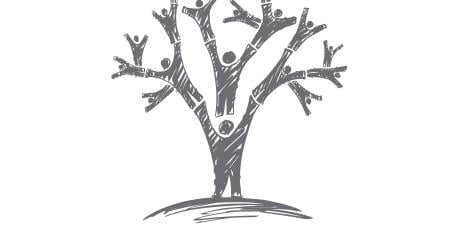Case
Kelsey is a first-year medical student in her second semester. One of her classes focuses on bedside manner. The purpose of the course is to give students time to speak with patients and understand their perspectives—their knowledge, hopes, and fears. Kelsey and a few of her classmates are assigned to a hospice, where each spends time talking in a nonmedical capacity with a patient.
In the previous semester, the students heard lectures on how to take histories from different types of patients (e.g., children, the elderly) and on special topics (e.g., cultural sensitivity and end-of-life care). Kelsey had had one lecture about talking with the elderly and one lecture about end-of-life issues and options before her first visit to the hospice.
On one trip, Kelsey was assigned to spend time with Mrs. Walsh, an amiable 70-year-old woman who had entered hospice care 2 days earlier. Mrs. Walsh’s chart said that she and her family members had elected to discontinue chemotherapy, which was making her feel terrible and not having any effect on her cancer, which had metastasized to her spine and lungs. Mrs. Walsh had a do-not-resuscitate (DNR) order in place. The visit was going well: Mrs. Walsh was talking happily about her husband, her children, and her grandchildren. Then Mrs. Walsh related her struggles with cancer and the decision to enter hospice care. Next Mrs. Walsh began to talk about facing mortality and said she was frightened about how she would die. She was not sure what the end would be like for her and questioned whether hospice was the right choice, though she was not really sure what would have been a better choice.
Throughout this time, Kelsey remained quiet. She wanted to empathize with Mrs. Walsh, to encourage her to continue thinking about these tough topics, and to ask questions that would help Mrs. Walsh flesh out her own ideas. She wanted to talk about the other options (not having a DNR order, receiving aggressive treatment, dying in an ICU on a ventilator) in ways that might remind Mrs. Walsh why she and her family had chosen hospice care in the first place. But Kelsey didn’t know whether she was allowed to enter into this type of conversation with a patient—she’d barely begun her medical training, after all.
Commentary
The end of life (EOL). The dying process. Most physicians grapple with caring for patients during this period in their lives, marked by personal conflict, unfamiliarity, and anxiety.
For physicians, death is often seen not as an inevitable event and a natural process but instead as a medical failure. The doctrine that “saving lives” is the ultimate goal of medical care is one that is transmitted beginning early in training and traditionally continues through residency and into clinical practice. Put simply, overcoming death is success in the medical world. Physicians spend 4 years learning the ins and outs of this process—the medications, the procedures, and the technology focused on evading death. Once death is near and medical interventions have reached their limit, doctors often find themselves lost and uncertain about how to proceed, feeling inadequate and, at times, even experiencing a sense of dishonor and guilt about the death of a patient.
In an article on physician learners’ perceptions of death, first-year medical students were asked to anticipate their feelings after the death of their first patient [1]. One said, “I’m going through all of this training only to stand around and watch/help someone die” [1]. Another,
I feel afraid that I will not have the knowledge I need in order to save the life of a patient…. I am afraid I will need to tell family members of the unexpected death of a loved one…. I am afraid of what my colleagues will think and I wonder will they continue to trust me as a doctor [1].
Even the most highly revered humanist physicians describe discomfort about caring for a dying patient. Abraham Verghese candidly writes of his discomfort with death, undoubtedly expressing the sentiments of many other physicians.
I had always felt inexpert when a patient was near death…. Give me a patient with massive gastric bleeding or ventricular fibrillation and I am a model of efficiency and purpose. Put me at a deathbed, a slow dying, and purpose is what I lack. I, who till then have been supportive, involved, can find myself mute, making my visits briefer, putting on an aura of great enterprise—false enterprise. I finger my printed patient list, study the lab results on the chart, which at this point have no meaning. For someone dealing so often with death, my ignorance felt shameful [2].
The fear, unease, and helplessness described in these passages are undeniable.
The end of life is also unpredictable. In the evolving world of standardized medicine, algorithms and scores and clinical guidelines have become commonplace. There are the Rivers protocol for sepsis, the MELD score for liver failure, and the NEXUS criteria for diagnosing cervical spine injuries. But, although there are general guidelines, there are no set standards to help physicians navigate dying with a patient and family. One patient may opt for continued parenteral nutrition in the hopes of living until her daughter’s college graduation. Another patient may opt to discontinue all aggressive measures immediately if it means spending another day in the hospital away from his wife. It is a poignant, individualized process that requires delving into the more personal side of patients’ lives, including their hopes, goals, and values. This is an uncomfortable place for most physicians.
And, finally, there is the personal anxiety that physicians experience around death. Doctors’ fears, thoughts, and concerns surrounding death, a term coined “death anxiety,” preclude many from speaking frankly and honestly with patients. This can “impair the display of empathy on the physician’s part…. [The] physician’s fears may be displayed in physician’s gestures and postures, which may influence the proper communication” [3]. What is even more concerning is that, according to studies, a personal fear of death may discourage inexperienced medical professionals from breaking bad news to patients [4]. Doctors’ own apprehensions may impede the provision of optimal care.
These are the issues that arise for seasoned physicians encountering death, and they are certainly magnified in a newly white-coated medical student such as Kelsey. Despite this, she senses that Mrs. Walsh is looking for support as she navigates the remainder of her life. Understandably, Mrs. Walsh has questions, concerns and apprehensions, but Kelsey is confused about how she is to help her through this process. Is she allowed to enter this conversation? What are the goals? As a learner, what are her boundaries?
There are two pieces to supporting a patient like Mrs. Walsh during the dying process. The first is the exploratory piece—eliciting fears and concerns, walking alongside the patient—inviting Mrs. Walsh’s full participation in the process. The second is the supportive piece. This is the part during which physicians allay fears, provide information, and support the patient through this journey. “Communication can be a route to finding meaning in death and to making and deepening connections with the living” [5]. During the dying process, Richard McQuellon and Michael Cowan explain [6], “conversation is the bridge that permits professional and family caregiver to join in the experience of living-toward-death” [7]. By engaging in conversation with Mrs. Walsh, Kelsey can help her glean life-enhancing meaning and value from a situation in which many find only despair.
This is much more easily said than done, and, although Kelsey senses the need to talk to Mrs. Walsh, doing so can be difficult. The first step in conversing with patients near death is allowing oneself to “go there.” For professional caregivers, family members, spiritual care chaplains, or any caregiver, this is often the most challenging part. To many people, the topic of death is to be avoided [8], and even hospice nurses have admitted to diverting conversations away from concerns about illness or feelings because they did not know what to say, felt inadequate or intrusive, or did not want to upset the patient [5]. For physicians and physician learners, recognition and acceptance of this discomfort is a critical first step.
After these reservations are acknowledged, physicians must recognize the difficult but important task of moving forward and creating the space that makes it easier for patients to enter this difficult conversation. The best way of doing so, oftentimes, is just sitting with the patient. “Conversation is more than exchanging words; sometimes all it requires is silent, attentive presence” [9]. Beyond simple presence, Patricia Thompson writes that “you must try to go where the patient is mentally…on a street corner waiting for the trolley rather than in a nursing home, if necessary. Inquire about the patient’s past. Empathize with the patient’s feelings even if you have to throw reality out the window” [10]. As is taught during introductory classes of medical school, open-ended questions directed at comprehension and expectations are helpful. “Mrs. Walsh, what is your understanding of your disease?” “What are your hopes and concerns for the remainder of your life?”
Physicians must realize that patients in “mortal time,” the psychological state human beings enter when confronted with the prospect of death [6], move back and forth from everyday coping to thoughts and feelings about their impending death. Coping is a dynamic process with peaks during which acceptance predominates and valleys during which questions, worries, fears, and doubts predominate. Patients may vacillate between the two, the peaks or valleys may predominate, or patients may be elsewhere, a place where they need time and space to gain footing as they grapple with their diseases.
The power of embracing this process of exploration and conversation is very eloquently described by McQuellon and Cowan:
Whatever the details of a fatal illness, and however great the differences in backgrounds, roles and responsibilities of those communicating about it, authentic conversation has the power not only to enhance how people cope practically with dying, but to illuminate and enrich the very meaning of life for patients and caregivers alike as they enter the sacred moment of mortal time together. The terrifying and liberating paradox of mortal time is that in order to tap the depth of meaning available to those facing death together, we must embrace what we mortals fear and ordinarily avoid with every fiber of our being. We must turn toward death together [11].
This is the extraordinarily powerful piece that Kelsey can certainly partake in with Mrs. Walsh.
The second portion of this process is providing guidance. Mrs. Walsh wants to speak about this process but she is also searching for direction and support. She has doubts which require thoughtful guidance. Though these two steps are certainly not separate processes, they are divided for the purpose of delineating roles for a physician learner.
This is the role that requires experience and clinical knowledge. It is a complex process. As a clinician, your goals in this context are many and include affirming that you will not abandon the patient or patient’s family, informing the patient about the pros and cons of further aggressive disease-modifying treatments, exploring advanced directives, and discussing palliative care options including aggressive pain and symptom management, all communicated in a compassionate and kind manner.
How will Kelsey be trained to do this?
Medical school training in caring for patients at the end of life is evolving slowly. Although the necessity of teaching end-of-life care in medical school curricula has been established, educators continue to struggle to find the optimal means and venues for teaching these skills. Currently, most of EOL education occurs in the preclinical years, often in the form of lectures focused primarily on knowledge, including the legal aspects of advance directives, the key topics of palliative care, and the basics of skillful communication, rather than skills and attitudes [12]. These lectures are useful in laying the groundwork for quality EOL care, but, just as with most other skills, formal instruction must continue within the clinical setting.
In one study, the gaps in medical education were evident. When fourth-year medical students were asked to describe their clinical experiences with end-of-life care, they described situations in which they “stood frozen,” not knowing what to do, and scenarios during which they “did not have enough medical experience to explain the necessity or issues surrounding intubation, respirators, etc., to concerned patients, and certainly did not have the medical knowledge to advise patients on such major decisions” [13]. One student felt as if she were “left to her own devices” in caring for a patient with end-stage lung cancer [13].
In a study of third-year medical students, all reported that they had cared for a dying patient, yet 41 percent had not observed a physician talking to a dying patient, 35 percent had never discussed care of a dying patient with the attending physicians, and 85 percent had never witnessed a surgeon telling a family that someone had died [14].
Why does this seem to be the case? As Grauel and colleagues argue, “competence in the care of the terminally ill is an area that many physicians have considered to be of low priority” [15] and, thus, though students and residents are put in situations where they are confronted with these issues on a daily basis, they are learning about care at the EOL through “baptism by fire.” Though there is undoubtedly value in learning through actual patient encounters and direct exposure in the clinical setting, supervision and guidance during these difficult conversations is a critical component that is often overlooked.
The literature on medical education consistently argues that learning about end-of-life care in all its forms should be integrated into rather than isolated from the rest of the curriculum [12]. Although in-classroom lectures are necessary and important, the process of learning needs to be continued in the clinical setting. It is within this forum, during the day-to-day clinical encounters, that doctor-family communication can be developed, initially through observation and then through such methods as direct feedback and debriefing sessions.
The value of mentorship cannot be overemphasized. This can mean working under the tutelage of other practitioners who are more experienced and comfortable with communication with dying patients, such as social workers, hospice nurses, hospice volunteers or spiritual care counselors. The multidisciplinary approach of hospice care is a rich environment for medical students. In a study of medical students placed within hospices, participants emphasized the importance of experienced hospice volunteers, whom they regularly looked to for guidance and support. Students reported that they learned much from observing their volunteers’ communication skills and comfort with patients’ conditions [16].
Kelsey finds herself in this setting, and it is the ideal environment for her to begin to acknowledge her own personal anxieties surrounding death as well as her own concerns and reservations as a budding medical practitioner. She can look to the hospice practitioners, including the physician, for guidance. And following her conversations, Kelsey can look to debrief and explore her emotions and feelings regarding these undoubtedly difficult encounters.
With the continued development of hospice and palliative medicine as a specialty and the growing realization among educators, clinicians, and administrators that EOL care requires as much emphasis as cardiology and pediatrics, care at the EOL will certainly continue to gain momentum as an area of focus and interest within medical school curricula. As this occurs, physicians will enter clinical practice with increasing comfort and ease in dealing with dying patients and, in turn, will serve as more experienced and facile mentors and teachers for young physician learners.
References
-
Williams CM, Wilson CC, Olsen CH. Dying, death, and medical education: student voices. J Palliat Med. 2005;8(2):376.
-
Verghese A. My Own Country. New York: Vintage Books; 1995:363-364.
-
Ciałkowska-Rysz A, Dzierżanowski T. Personal fear of death affects the proper process of breaking bad news. Arch Med Sci. 2013;9(1):128.
-
Ciałkowska-Rysz, Dzierżanowski, 131.
-
Planalp S, Trost MR. Communication issues at the end of life: reports from hospice volunteers. Health Commun. 2008;23(3):224.
- McQuellon RP, Cowan MA. Turning toward death together: conversation in mortal time. Am J Hosp Palliat Care. 2000;17(5):312-318.
-
McQuellon, Cowan, 316.
-
Becker, E. The Denial of Death. New York: Free Press; 1973.
-
McQuellon, Cowan, 317.
-
Thompson PM. Communicating with dementia patients on hospice. Am J Alzheimers Dis Other Demen. 2002;17(5):265.
-
McQuellon, Cowan, 318.
- Wear D. “Face-to-face with it”: medical students’ narratives about their end-of-life education. Acad Med. 2002;77(4):271-277.
-
Wear, 273.
- Rappaport W, Witzke D. Education about death and dying during clinical years of medical school. Surgery. 1993;113(2):163-165.
- Grauel RR, Eger R, Finley RC, et al. Educational program in palliative and hospice care at the University of Maryland School of Medicine. J Cancer Educ. 1996;11(3):144-147.
- Stecho W, Khalaf R, Prendergast P, Geerlinks A, Lingard L, Schulz V. Being a hospice volunteer influenced medical students’ comfort with dying and death: a pilot study. J Palliat Care. 2012;28(3):149-156.



